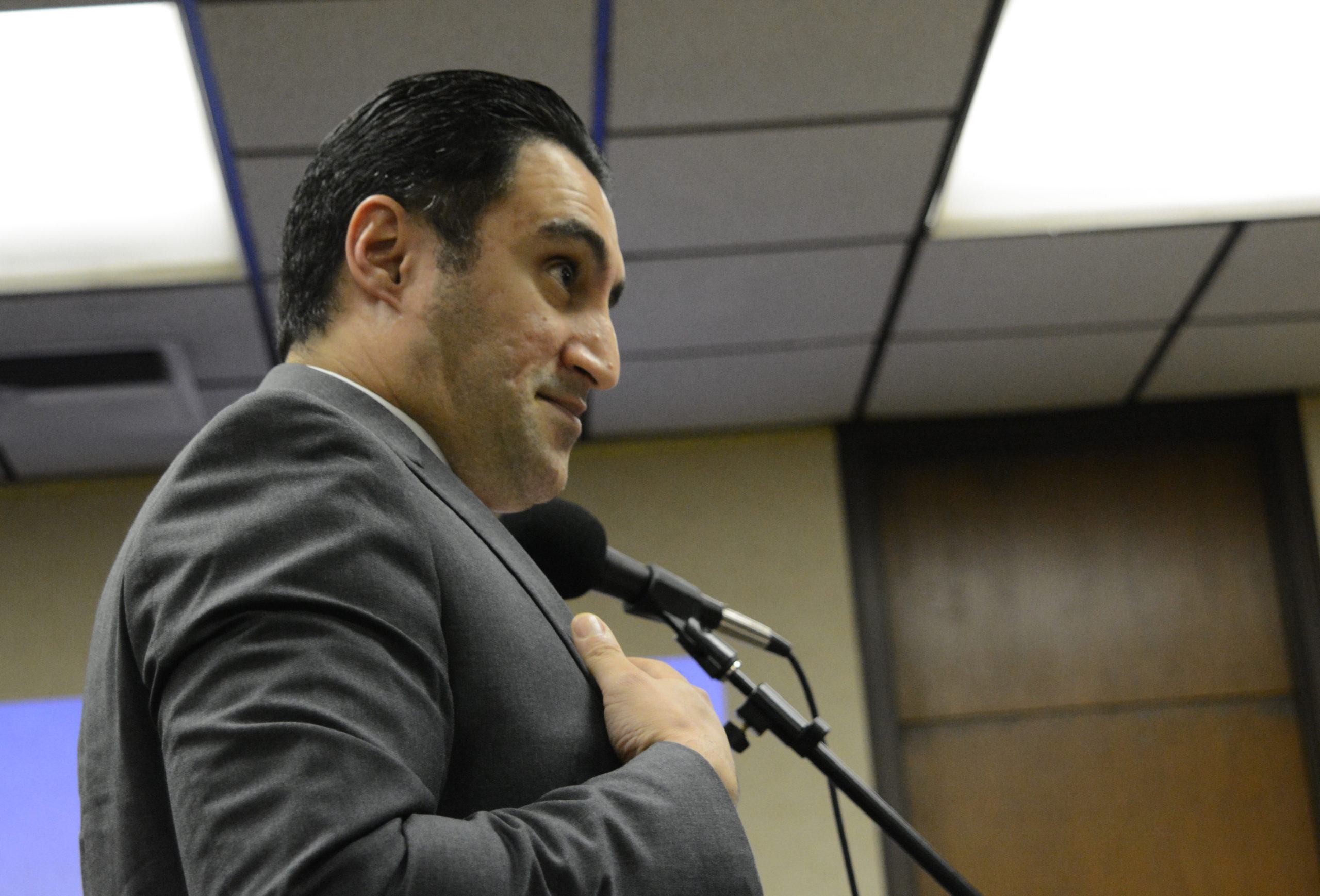It was a battle between business interests and public safety in Great Neck Plaza last Wednesday night as a business sign owner, his supporters and village officials traded words over a proposed law regulating vehicle-mounted signs.
Joseph Haghighat, the owner of Great Neck Printing, Signs & Graphic Design, said it could unjustly burden his business and targets him. He also said it could harm other businesses relying on him and interferes with his right to free expression.
“I should point out that this proposed ordinance appears directly to affect me, my family of six, and my 27-year-old printing design sign business, as well as so many of our Great Neck customers and Great Neck business owners from the whole Great Neck area,” Haghighat said, noting that his billboard mounted signs have helped him and others get customers.
A current draft of the law defines a vehicle-mounted sign as a sign, billboard, printing or other display affixed or mounted to a parked vehicle or trailer used primarily for advertisement purposes, to attract attention and or direct people to a business or activity.
The legislation aimed to deter these vehicles from parking in highly congested areas of the village, like South Middle Neck Road, Middle Neck Road, Grace Avenue, Cutter Mill Road and Great Neck Road, and within 25 feet of pedestrian crosswalks.
Officials said the proposal, which comes with multiple exemptions, was necessary to help prevent accidents. These exemptions include allowing signs on licensed public vehicles, signs advertising a vehicle for sale, signs required by government and printing on commercial vehicle advertising a business it’s associated with. These ads must fall “within the normal unaltered lines of the vehicle.”
“I believe that this law is necessary to determine where it is appropriate, where it is not appropriate, and to have restrictions on this because I feel that protecting the public safety is an important part of what I do as an elected official,” Mayor Jean Celender said. “I’m not going to shy away from those responsibilities.”
Tania Hannanian, a woman from 538 East Shore Road, described the proposition as part of a larger pattern of onerous business regulations. She also said that officials did not base the law on concrete evidence.
“You can’t stop something just for an assumption,” Hannanian said to the board.
She added that she does not want to see the vibrancy of the Plaza killed.
Eli Yaghoubi, who Haghighat said was a customer, noted every advertisement demands attention. Yaghoubi said he sees no difference between Haghighi’s vehicle-mounted sign and any other ad.
“It’s just a distraction,” Yaghoubi said. “It’s not a public safety issue.”
However, Jeffrey Schwartz, a 40-year Great Neck Plaza resident living on Overlook Avenue and Celender’s husband, expressed support for the law. He described Great Neck Plaza as “the heart of the peninsula,” filled with pedestrians and already rife with distractions.
“There is no comparison to what he’s talking about and what anyone else is talking about,” Schwartz said. “If we’re going to be a situation where we allow another distraction to all the other distractions we have out there – and one that’s controllable – then I think we’re all derelict and I think if there’s an accident, then it’s going to be on everybody’s hands if we don’t deal with it.”
Ultimately, officials decided to table the law until Sept. 18 and meet privately with Haghighat.



